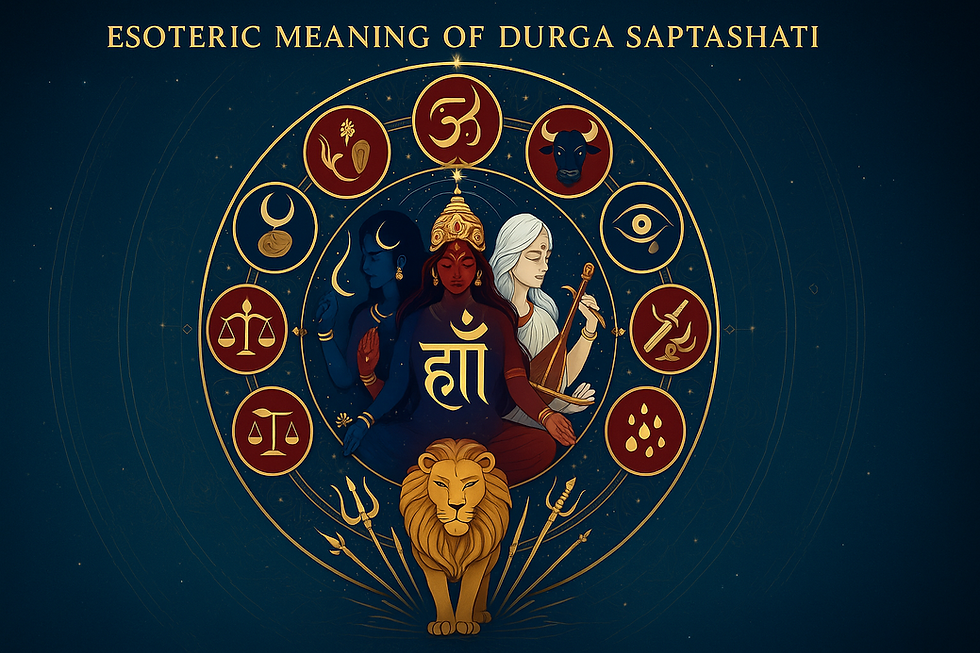The Breath That Transforms
- Dr Ananth Nalabanda
- Jun 9
- 3 min read

Sairam, dear readers.Over the past few years, my spiritual journey has been deeply enriched by the practice of Pranayama—ancient yogic techniques centred on conscious breathing. Among the many pranayama practices available, three in particular have stood out as both transformational and sustaining for me personally: Anulom Vilom, Bhramari, and Ujjayi. These techniques have not only deepened my inner stillness and clarity but also supported my physical health in tangible ways.
In this blog, I share the essence of these three practices—not just from a personal perspective, but backed by scientific evidence that affirms their profound impact on the nervous system, cardiovascular function, and consciousness. While the spiritual dimensions of breathwork are widely revered in yogic traditions, it is heartening to see modern research now validating what sages have practised for millennia.
Whether you are just beginning your path or are looking to deepen your connection to breath and spirit, I hope this article offers both inspiration and insight.
Breath as Medicine and Meditation
Pranayama, the ancient science of conscious breathing, is far more than a physical exercise. Today, medical research increasingly supports what yogis have practiced for millennia: breath is a bridge between body, mind, and the higher states of consciousness. This article explores three key pranayamas—Anulom Vilom, Bhramari, and Ujjayi—through the dual lens of modern physiology and inner transformation.
1. Anulom Vilom (Alternate Nostril Breathing): Harmonizing the Nervous System
Scientific Insight:Anulom Vilom regulates the autonomic nervous system, balancing the sympathetic ("fight or flight") and parasympathetic ("rest and digest") responses. This gentle alternation between nostrils activates both hemispheres of the brain, synchronizing logic and intuition, alertness and calm.
Evidence Highlights:
Increases heart rate variability (HRV)—a marker of nervous system resilience.
Reduces cortisol, lowers anxiety, and improves cognitive flexibility.
Shown to modulate prefrontal cortex activity, improving emotional regulation.
Spiritual Integration:This pranayama cultivates a meditative equipoise—where duality dissolves into harmony. Regular practice sharpens awareness while fostering a profound inner stillness, ideal for mantra japa, dhyana, or intuitive insight.
2. Bhramari (Humming Bee Breath): Sonic Healing and Pineal Awakening
Scientific Insight: Bhramari's distinctive humming vibration generates strong intra-cranial resonance, which research shows:
Increases endogenous nitric oxide (NO)—a molecule essential for vasodilation, neuroprotection, and immune defense.
Enhances sinus ventilation (86%), supporting ENT health and improving sleep.
Likely impacts the pineal gland, traditionally linked to intuitive perception and melatonin secretion.
Medical Insight: NO plays a key role in modulating inflammation and detoxifying the central nervous system. This may contribute to the gentle decalcification and revitalization of the pineal gland, which is often subject to fluoride and calcium deposits.
Spiritual Integration:This is not just breathing—it's an internal invocation. The vibration induces a silent sanctuary, facilitating inner listening. Practitioners often report feelings of expanded awareness, peace, and subtle joy.
3. Ujjayi (Victorious Breath): Detox and Pranic Amplification
Scientific Insight:Ujjayi pranayama, with its characteristic oceanic throat constriction, creates a slow, rhythmic breath that:
Boosts oxygenation and promotes gentle carbon dioxide retention, enhancing focus and endurance.
Increases parasympathetic tone, reducing stress and blood pressure.
Activates vagal nerve pathways, which control digestion, heart rate, and emotional processing.
Detox Benefits:
The slow, controlled exhalation supports lymphatic drainage and elimination of cellular waste.
Heat generation during Ujjayi (especially when combined with asana or kriya) stimulates internal cleansing—aiding liver function and metabolic reset.
Spiritual Integration:Ujjayi is often used in deep meditation and kriya practices, where it helps contain prana, creating an energetic upward current (udana vayu). This supports states of spiritual elevation, subtle body awareness, and emotional purification.
Comparative Snapshot
Pranayama | Key Mechanism | Medical Benefit | Spiritual Role |
Anulom Vilom | Alternating nostril control | Nervous system balance, HRV increase | Inner harmony and mind-body synchronization |
Bhramari | Sonic resonance, NO release | Pineal stimulation, ENT and immune health | Subtle awareness, inner silence |
Ujjayi | Constricted oceanic breathing | Detox, vagal activation, stamina building | Pranic retention and meditative depth |
Conclusion: Breath as an Evolutionary Tool
Each pranayama opens a different portal—physiological and spiritual. Anulom Vilom calms the dualistic mind, Bhramari vibrates open the inner senses, and Ujjayi fires the internal alchemy. Whether your path is healing, meditation, or spiritual growth, the breath is your most accessible and potent ally.
Inhale the divine. Exhale the illusion. Repeat.
References
Havenith, M.N., et al. (2025). Decreased CO₂ saturation during circular breathwork supports emergence of altered states of consciousness. Communications Psychology, 3(59). https://doi.org/10.1038/s44271-025-00247-0
Prasad, R., & Matsuno, F. (2006). Does Humming Sound Play Healing Role in Bhramari Pranayama? SCIS&ISIS2006, Tokyo, Japan.
Telles, S., et al. (2013). Neurophysiological effects of yoga breathing. BioPsychoSocial Medicine, 7(11).
Jerath, R., et al. (2006). Physiology of long pranayamic breathing. Medical Hypotheses, 67(3), 566-571.
Balasubramanian, S. (2015). Physiological benefits of alternate nostril breathing. International Journal of Yoga, 8(2), 89–92.














Comments